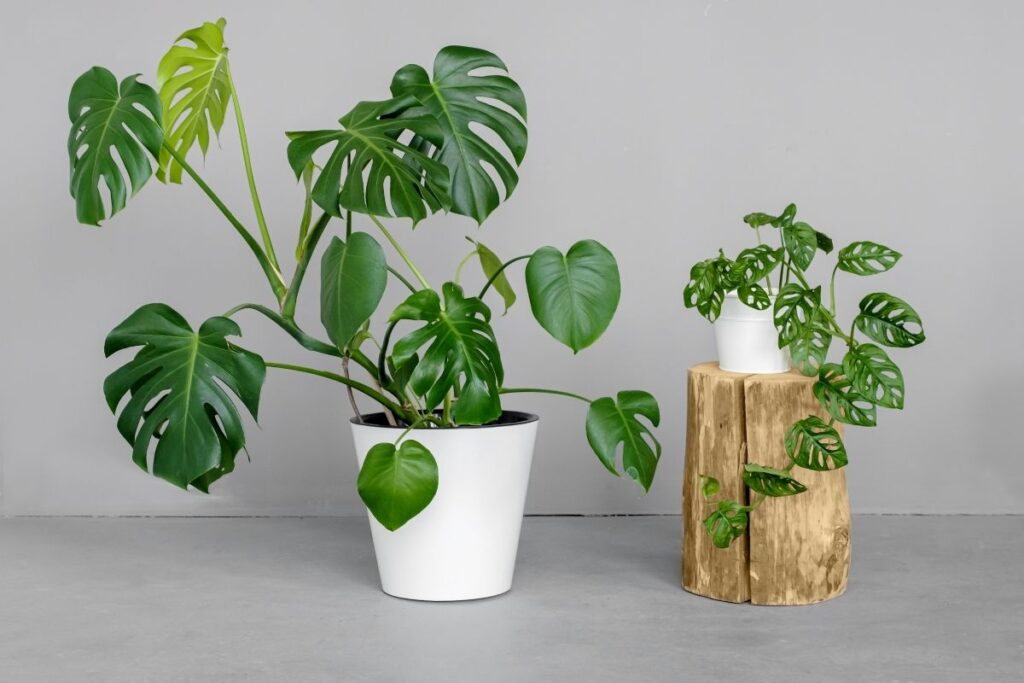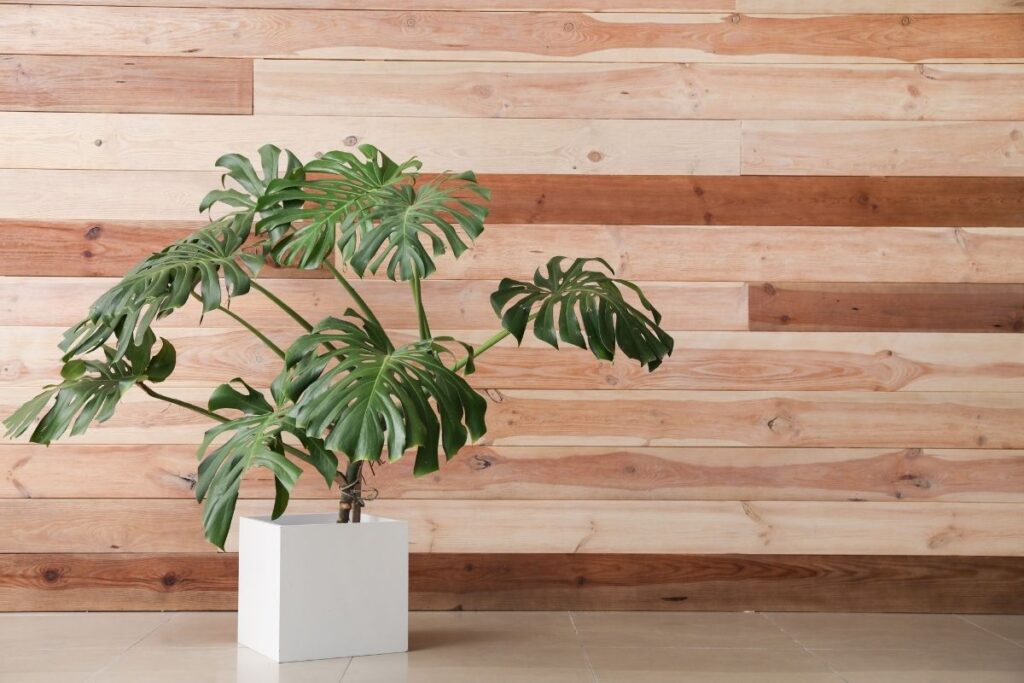Monsteras are popular houseplants for a number of reasons why monstera plant is changing color, they don’t require much care, they grow rapidly, their foliage is attractive, and they flower in spring.
But like any other plant, whether it’s a ficus or an azalea, the proper environment helps maintain its health and vigor. Monstera plants are very attractive when they are properly taken care of.
However, when they aren’t receiving the love and care they deserve, you can look for the warning signs in their leaves.
If you have a monstera and have noticed that its leaves are turning yellow, you’re in the right place. Here, we are going to go through all the reasons why the leaves of your monstera may be turning yellow.
We will also go through the remedies you can try out to get your plant looking and feeling the best it can.

Yellow Leaves And The Causes
You might be wondering – is the plant at risk of dying if its leaves are turning yellow? Well, that depends. Yellowing leaves are a sign of distress, but your plant won’t necessarily die.
Not straight away, anyway. If you ignore your monstera’s yellowing leaves, then your plant’s condition could worsen, and it could die.
However, just because you are noticing yellow leaves, does not mean that your plant is running on borrowed time. As long as you take the steps to find out why its leaves are changing color and fix the issue, it will be just fine.
There are a couple of reasons why your monstera’s leaves could be turning yellow. We will take a look at each of these reasons below and see how to determine the cause and what to do about it. Ready to learn a few things about your monstera? Let’s go.
Related: The Monstera Is Loose! How To Save Your Droopy Plant
Moisture Can Create Yellow Leaves
The first reason your monstera’s leaves could be turning yellow is because of moisture. This can be due to humidity, or moisture in the air, or your watering habits.
If you both underwater or overwater your monstera, its leaves will yellow. This is because the waterlogged soil doesn’t allow the leaf cells to breathe, so they begin to turn brown instead of green.
The solution here is simple: stop either over-watering or under-watering. Keep track of how often you water your plant, and always check if the soil is dry or moist before watering.
1. Pest Problems
Pest issues could also be turning monstera leaves yellow. Monstera plants are susceptible to pests like mealy bugs, aphids, scale insects, thrips, spider mites, and whiteflies. You may notice that the appearance of some of these pests changes depending on the season.
For example, scale insects prefer cooler temperatures than warmer conditions, so they tend to appear more during the winter months.
So, if you noticed that the leaves were turning yellow during the summer months, then there’s an excellent chance that one of these nasty pests is causing trouble.
Keep an eye out for the signs of these pests and tackle them quickly before they start eating into the rest of your monstera’s leaves.
There are many pest control products available for this purpose, so read up on what works best for your particular situation.
Generally, however, you will probably want to avoid using commercial pesticides that could cause harm. Instead, use more natural things such as neem oil to deter pests.
2. Unsuitable Temperatures

Monstera plants like to be in temperatures between 55˚F (13˚C) and 75˚F (24˚C), with 65˚F (18˚C) being ideal. If your monstera is growing outdoors, then keep an eye on the weather forecasts to make sure that the temperature is suitable for the plant.
Ideally, set it where its roots will be shaded from direct sunlight, which helps prevent heat stress. If you live in an area that gets hot spells throughout Summer, then consider moving your monstera inside until the weather cools down again.
In addition to this, we should note that any kind of extreme warmth will kill off your monstera. At the end of the day, your monstera needs to have a consistent environment, meaning that it needs to stay indoors or outside at similar temperatures all through the year.
In extremely hot places, you need to take precautions against burning the plant, especially if the sun shines directly into the foliage. Do not overdo it; just move the plant to somewhere shady if needed.
3. Bad Lighting
Some people even think that their monsteras don’t like bright lights. However, when it comes to monsteras, sunlight does not necessarily mean full sunlight.
If your monstera has weak illumination, then it would usually benefit from additional light exposure, but excessive sunlight is not good for it.
When it comes to buying a lighting system, remember to follow the instructions provided by the manufacturer; most monsteras do well with indirect lighting systems.
That way, you won’t burn yourself with direct sunlight shining into the plant, and you will get the best possible results from your lighting setup.
If you’re still unsure about the suitability of a specific type of lighting, then try placing a tarpaulin over your monstera to shield it from direct sunlight. This can help increase humidity levels while reducing evaporation rates.
Plus, shading the foliage will protect the plant from overheating and dying. Keep an eye out for any signs of damage caused by prolonged high-intensity sunlight, and act accordingly.
Related: 13 Types of Monstera To Boost Your Surroundings With Extravagant Greenery
4. Improper Fertilizing
Another thing you should consider is toxic foliar feeding (i.e., fertilizer). While it is true that some fertilizers contain high levels of copper, others are completely safe, and this includes fertilizer mixes.
If you are concerned about your monstera developing blue/green spots, make sure the fertilizer is not one of the ones containing copper.
Once again, be mindful as to where you buy them from, too. Some nurseries sell fertilizer that contains copper, while others don’t!
This means that if you feed your monstera with a product that includes copper, and you notice that your leaves are getting more yellow than normal, you need to cease using its contents.
In addition, make sure you change your water regime after doing this and watch your monstera intently to guarantee that the changes have happened. If there was no improvement within a week, take another approach.
5. Seasonal Changes
The seasons can also affect the leaves of your monstera. If the foliage on your monstera is turning yellow, there is a chance that it could simply be because of the seasons.
As summer approaches, vegetation tends to produce greener foliage, which is why they turn green in springtime. The exact opposite happens during wintertime; plants tend to grow redder due to colder temperatures.
In short, seasonal factors may cause problems for your monstera. To avoid these issues, you need to ensure that the soil around your monstera is neither freezing nor overly warm all year round.
You may want to invest in an indoor watering solution to regulate the temperature around your monstera’s container and keep a close eye on it at all times.
Your monstera shouldn’t be growing outside at its brightest point during the day, either; otherwise, this can lead to heat stress.
6. There Isn’t Enough Space For The Roots
Monstera leaves can also turn yellow if there isn’t enough space for the roots to grow. This can happen easily because monsteras grow very fast initially, so they require a lot of room to expand properly; hence, the reason they look small in the start.
The issue here is that when the root dies down, the leaf starts withering up. To avoid this happening, ensure that you provide adequate space for the root to grow.
Plant the monstera in potting soil at least 2 inches deep and see what happens. If all goes well, then you’ll definitely have healthier green leaves.
You will need to carefully watch your monstera, especially when it is young. Since it can grow very quickly, you need to be able to repot it as soon as necessary.
Of course, you can plant it in a larger pot to begin with, but this isn’t always practical or ideal. You can’t use a pot that is too big, but you will want a nice medium.
It is better not to use a pot that is too large for it, otherwise, it may struggle to adapt to its new environment.
Frequently Asked Questions
Do Monsteras Grow Fast?
Yes, monsteras do grow fast, especially when they are young. However, they don’t really grow much faster than other houseplants as they get older. In fact, they actually grow slower than some plants.
Are Monsteras Easy To Care For?
Like most houseplants, monsteras are fairly simple to care for. They like average light levels, bright sunlight, and good ventilation.
Additionally, they prefer warmer temperatures compared to many other plants. If you live somewhere where the temperature fluctuates greatly throughout the year, then you should consider buying a different type of houseplant.
Do Monstera Plants Go Dormant?
No, monsteras don’t go dormant. Instead, they develop a thick layer of brownish-green tissue over their leaves. This protects the plants from harsh weather conditions.
When the weather becomes less severe, this layer begins to disappear. However, if the weather remains cold for an extended period of time, then the leaves could eventually die off.
Final Thoughts
So, to summarize, monstera leaves can turn yellow for a number of reasons. These include moisture levels, the temperatures, pests, using the wrong fertilizer, the seasons, and its roots.
As explained previously, when these factors occur simultaneously, then your monstera’s leaves are bound to get affected sooner or later. So, in order to prevent this, be careful about how you manage your monstera.
These plants are stunning and make the perfect centerpiece, but you need to be sure to take care of them properly. If you love them, they will be a great reward for your hard work.
Editor’s Recommendations
Monstera Albo: The Best Care, Propagation, And Watering Guide







